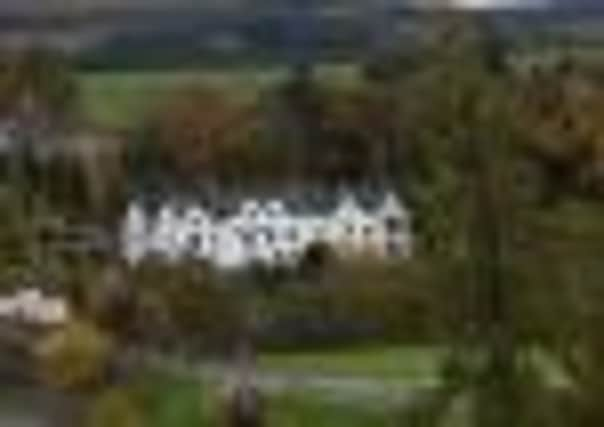Travel: Craigellachie Hotel, the Highlands


From Aberlour, BenRiach and Cragganmore through to Royal Brackla, Springbank and Tormore, the bar offers the chance to take a virtual tour of Scotland’s whisky producers. Nestled in the heart of Speyside, just 12 miles south of Elgin and surrounded by 52 distilleries, the hotel seems like the ideal place to set out on such a trip, accompanied by tasting notes supplied by former guests.
A series of green, leather-bound folders reveal the thoughts of drinkers, including a South African whisky aficionado who compared the taste of one Scotch to a cheesecake made from his favourite local fruit, while the neat copperplate handwriting of an American visitor descended into an enthusiastic scrawl by the time the eighth dram of the evening had been consumed.
Advertisement
Hide AdWith descriptions like “caramel”, “citrus” and “tobacco” being used to describe the different smells and tastes of whiskies, it’s no wonder that the world of Scotch can seem mysterious to the uninitiated. Some of the stranger descriptions – “iodine”, “saddle soap” and “singed cloth” – might baffle even an experienced connoisseur.
Fortunately, help is on hand at the Craigellachie in the form of Stefan Masson, the hotel’s resident whisky enthusiast and expert. Not only has he worked in distilleries, Masson studied brewing and distilling at Heriot-Watt University in Edinburgh, so can back up smelling and tasting experience with knowledge of the chemistry that has taken place inside the barrels of ageing malt.
Having explained that I wasn’t keen on peated whiskies, Masson rose to the challenge and set up a tasting to introduce me to progressively more-peated Scotch. We started in the lowlands with Auchentoshan and its 12-year-old triple-distilled tipple before moving into Speyside with an 18-year-old example from Glenlivet.
Next it was off to the island of Islay and a 12-year-old Bunnahabhain, which proved that not all Islay whiskies have to be peat monsters. Our journey ended in Campbeltown, at the Springbank distillery, which makes Longrow, a ten-year-old malt which might just win me round to peated whisky.
Our tasting session followed dinner in the Ben Aigan restaurant, which holds one AA rosette and, going by the appetisers served beforehand and the homemade butter that accompanied the meal, could be ready to receive its second. While the meal in the restaurant was very enjoyable, it is the supper the previous evening in the hotel’s Bremner’s public bar that has really stuck in my mind.
My fish-loving wife spurned her usual choice to tuck into the freshly prepared rack of ribs, which were melt-in-your-mouth gorgeous. I opted for a local steak, which was tender, juicy and surrounded by delicious homemade chips and onion rings. The only element missing was local beer on tap; although cask ale can be tricky to sell in large enough quantities in a smaller hotel bar and despite bottles of Cairngorm’s Trade Winds being really enjoyable, you just can’t beat a fresh pint.
Advertisement
Hide AdAfter all the whisky sampling in the hotel, there’s little excuse for not visiting one of the distilleries in the surrounding area. Free tours at the nearby giant distilleries at Glenfiddich and the Glenlivet are both well-worth a look, but there is also a wealth of smaller sites to explore in Speyside, such as Benromach, near Forres, which is owned by Elgin-based bottler Gordon & MacPhail. If the thought of wandering between the sleeping wooden casks of whisky at a distillery doesn’t appeal, then you don’t have to go far from the hotel to enjoy Speyside’s other attractions. The River Spey flows alongside the hotel and is flanked by the Speyside Way, a long-distance walking route that follows, in part, the track bed of the old Strathspey Railway, which was closed by Dr Beeching in the 1960s.
The Craigellachie was built as a railway hotel in 1893 and so it seems appropriate to enjoy the sweep of the river while walking along the old route that trains would have followed as they chugged north from Aviemore heading for Dufftown or Moray.
Advertisement
Hide AdThe Speyside Way also gives access to the nearby Craigellachie Bridge, constructed between 1812-15 and based on designs by engineering genius Thomas Telford, who also gave us the Caledonian Canal, Edinburgh’s Dean Bridge and the original harbour at Nairn. The crossing at Craigellachie is now a grade-A listed structure, celebrated as Scotland’s oldest surviving iron bridge, a great reminder of the civil engineering triumphs of the 19th century.
• THE FACTS A tasting menu and whisky experience at the Craigellachie Hotel starts from £138 per room per night, based on two people sharing, tel: 08444 146526, www.thecraigellachiehotel.com